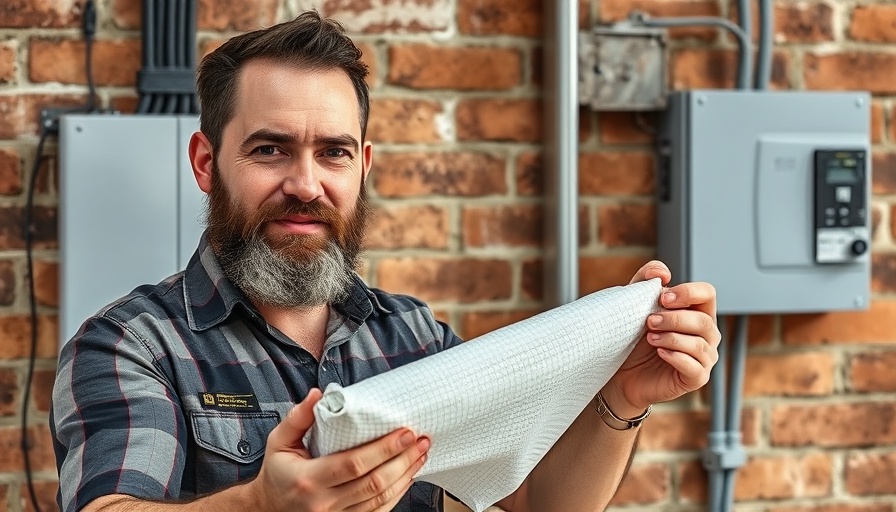
Mastering Air Sealing: Effective Techniques for Electrical Penetrations
As energy efficiency becomes a top priority in home construction and renovations, the importance of air sealing cannot be overstated. Among the potential sources of air leakage, electrical penetrations are often neglected, causing drafts that significantly affect a home’s energy performance. Grounded in the insights shared by experts and validated by recent studies, this article navigates the best practices for air sealing electrical penetrations through exterior walls, ensuring optimal energy efficiency and indoor air quality.
The Problem with Electrical Penetrations
Electrical wiring passes through many walls and ceilings, establishing vital connections for our homes. However, every drill hole can become a potential air leak. According to experts, many electrical contractors often overlook sealing these penetrations despite building codes mandating that air passageways between conditioned and unconditioned spaces be sealed. The typical culprits of leakage stem from improperly caulked wiring holes and electrical boxes that do not provide airtight seals. This negligence can not only lead to energy inefficiencies but also contribute to moisture problems, as warm, humid air can infiltrate unconditioned spaces, creating condensation issues.
Historical Context of Air Sealing in MEP Trades
Historically, the responsibility for air sealing electrical penetrations was rarely assigned to electrical contractors. Instead, insulating or carpentry crews were expected to handle this task. However, as awareness of energy efficiency grows, there is a shift—MEP contractors now recognize the need for oversight in sealing their work. With proper training, these trades can efficiently tackle air sealing, reducing the overall leakage in modern buildings.
Current Best Practices for Air-Sealing Electrical Wiring
Air sealing around electrical wiring involves several straightforward strategies. The Building America Solution Center emphasizes methods such as using fire-retardant caulk or spray foam compatible with adjoining surfaces. These materials not only create an effective air barrier but also enhance fire safety. When installing, ensure that drilled holes are clean and not oversized; gaps around wiring should be sealed tightly against the framing via caulk or foam.
How to Identify and Seal Common Leak Areas
Energy audits and blower door tests are quintessential for identifying air leaks caused by electrical penetrations. Thermal imaging can also highlight unsealed penetrations, allowing homeowners and builders to pinpoint areas requiring attention. The common locations include:
- Light switches and outlets, particularly along interior walls.
- Electrical boxes mounted in ceilings and walls.
- Holes drilled for wiring which should be caulked or foam-sealed due to their potential for air leakage into wall cavities.
Effective sealing requires diligence before insulation and drywall installation. In cases where attic access is possible, sealing around mounted electrical boxes should be prioritized—caulking each box ensures minimal air transfer between conditioned and unconditioned spaces.
Future of Home Efficiency: Looking Ahead
The construction industry is leaning into the need for comprehensive air sealing—especially with evolving building codes requiring tighter envelopes for new homes. With advancements in sustainable materials and sealing techniques, the energy efficiency of homes is bound to improve. Innovative approaches, such as pre-manufactured airtight electrical boxes, offer better solutions than standard options, enabling builders to meet growing energy standards effortlessly.
Practical Tips for Homeowners
For homeowners eager to enhance their own properties, adopting the following practices can lead to significant improvements in energy efficiency:
- Regularly inspect electrical penetrations and have them sealed if gaps are found.
- Encourage contractors to prioritize air sealing in their projects by communicating your energy efficiency goals.
- Consider hiring specialists for air-sealing projects in older homes, where penetrating wall systems might be more complex.
Ultimately, being proactive about air sealing electrical penetrations leads to a more comfortable, energy-efficient home while helping the environment and reducing utility bills.
In Conclusion
As we navigate energy conservation and sustainability more keenly, understanding and implementing effective air sealing practices becomes paramount. With all stakeholders—from homeowners to contractors—aligned in this objective, the journey towards greener homes is not just feasible but achievable. Regular maintenance, proper training, and leveraging new technologies will ensure that energy efficiency becomes ingrained in modern construction practices.
 Add Row
Add Row  Add
Add 






Write A Comment